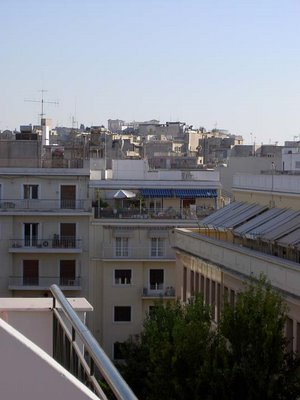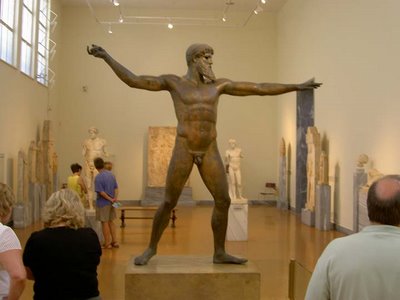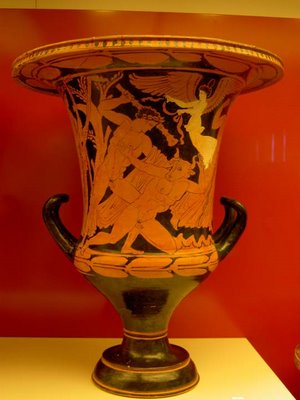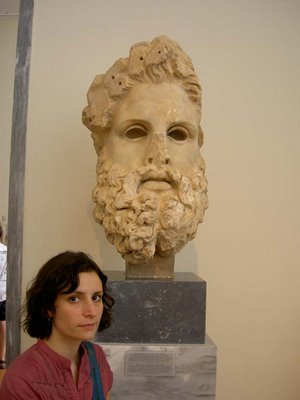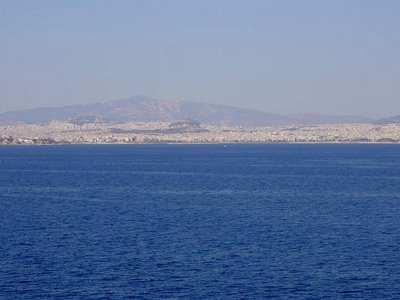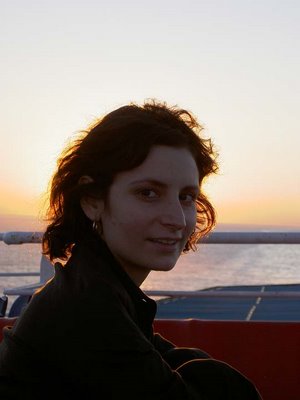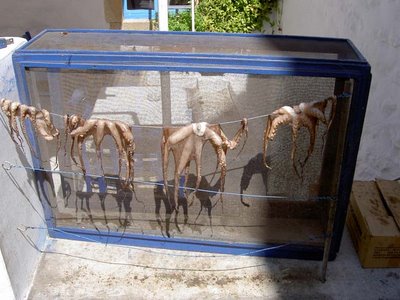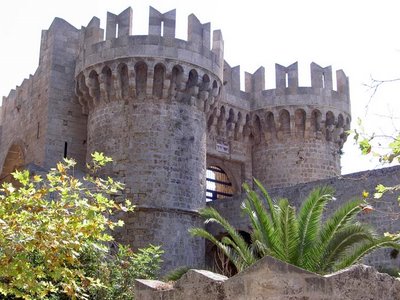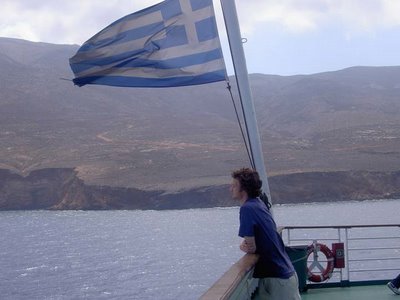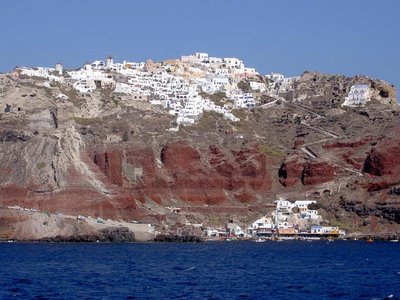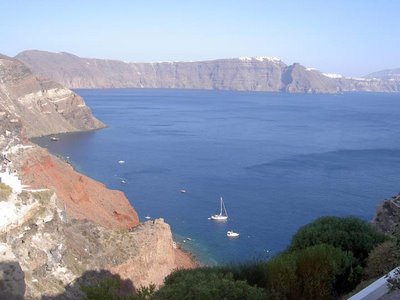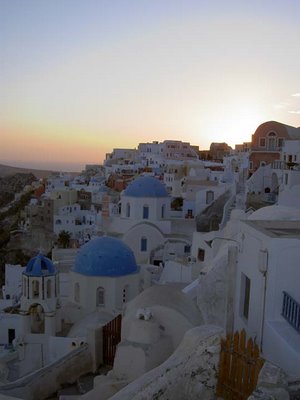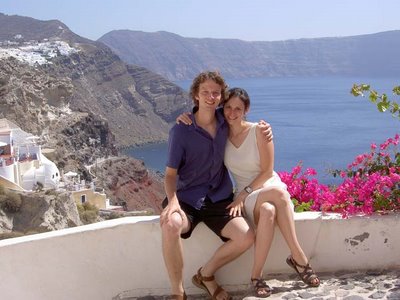Room with an ocean view. In Iraklio, the biggest city on Crete, we were literally across the road from the sea.

A view into Iraklio's harbor from our room's balcony. Note the rough surf. This is foreshadowing.

The main reason we went to Crete was to see the Minoan ruins at Knossos. Reconstructions show the characteristic tapering columns of the Minoans.

Much of the site is in ruin, and even the broken walls are rebuilt. The main archaeologist who worked here in the early 1900s, Sir Arthur Evans, is credited with some fanciful interpretations of what the place looked like in its prime.

Despite uncertainty about Knossos, experiencing the Minoan history was worth the trip. This is the setting for the Greek myth of the minotaur and the labyrinth. As far as we could tell, there was no evidence of a labyrinth, but the Minoans did venerate the bull. A sculpture in the Iraklio museum.

A Minoan vase. I really like ancient pottery. You should ask Sofia about it.

Excursion planning. We took a day trip to a town in western Crete called Rethymno (or Rethimno, the latinate spellings are not standardized). Crete was one of my favorite places we went. It is so big--the biggest of the Greek Isles--and has such a big population that it has a functioning economy independent of tourism. It felt more real that way.
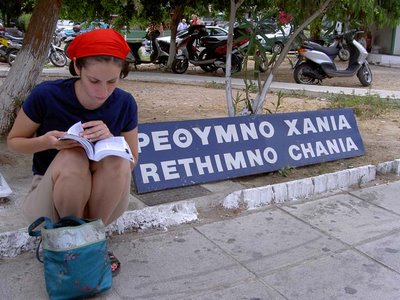
It is also fabulously beautiful. All the islands we saw were quite mountainous, but the Cretan mountains were among the most impressive. From the bus window.

Rethymno has a lot of Venetian architecture. One of the most impressive things about Greece was the depth of the history. Some places on Crete, for example, had remnants of neolithic settlements covered by Cycladic settlements covered by Ancient Greek, then Roman, then Byzantine, then Venetian, then Ottoman settlements.

The Venetian streets were crumbling, giving the place a kind of creepy Don't-Look-Now vibe, especially off of the tourist strips. But I guess you can't get too creepy with blue skies and a blazing sun.

Back in Iraklio, we had more time to spare than we expected, so we walked around the city some more. Greek food was usually good. Here in a butcher's display you can see sheep's heads, rabbits, and some goat testicles. Yummmm!

We also saw some street life. Some conflicts in Greece have even deeper roots than the Greek v. Turk rivalry.

All this walking was starting to wear us down. Sofia's feet reacted in a most freakish manner. Such veins!

But we found ways to soothe OUR dogs.

